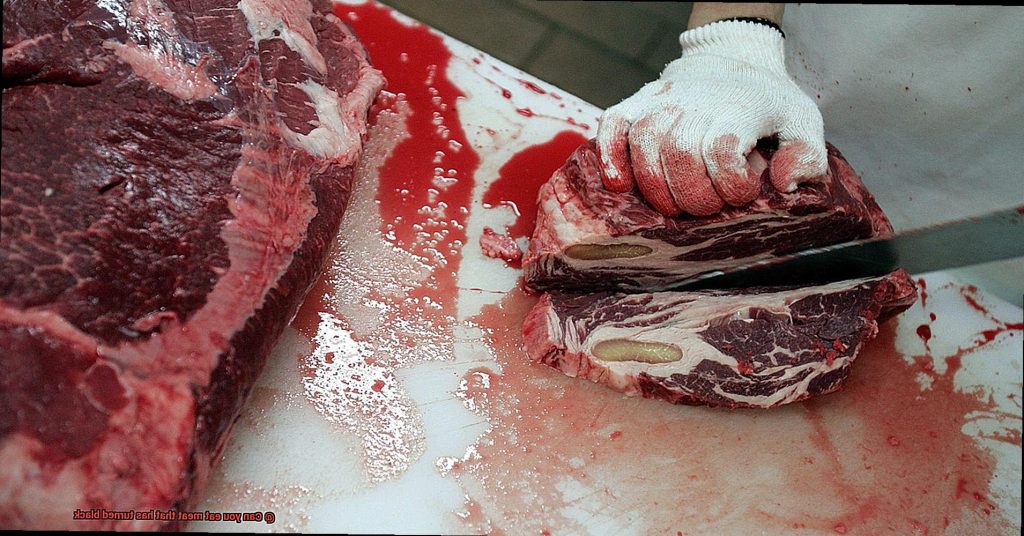Picture this: you swing open your fridge, ready to whip up a mouthwatering meal, only to come face-to-face with a piece of meat that has transformed into a shade as dark as midnight. Cue the panic. Questions start swirling in your head: Is it safe to eat? Has it gone bad? Can you salvage this blackened beauty? Fear not, my fellow carnivores, for today we embark on a quest to uncover the truth behind this culinary enigma.
In the realm of meat consumption, when color takes a sinister turn, our instincts scream “danger.” But there’s more to this transformation than meets the eye. Together, we shall delve into the science behind meat’s journey from vibrant and appetizing to hauntingly black. It’s time to separate fact from fiction and ensure that our taste buds don’t miss out on potential flavor explosions due to unwarranted fears.
Join me as we unravel the reasons behind meat discoloration, decipher when it’s still safe for consumption, and learn when caution is indeed warranted. So grab a seat at the table, slip on your trusty apron, and let’s dive headfirst into the captivating world of blackened meat.
Contents
What Causes the Discoloration of Meat?
As avid grillers, we’ve all encountered that moment of panic when we spot a piece of meat that has turned black. Before you toss it in the trash, let’s dive into the science behind meat discoloration and determine whether it’s safe to consume. By understanding the causes and potential risks, you’ll be better equipped to make an informed decision about your grilled delights.
The Culprits: Oxidation and Temperature Abuse
The primary cause of meat discoloration is oxidation. When meat is exposed to oxygen for extended periods, the iron in myoglobin reacts with oxygen molecules, resulting in dark or black coloration. This process is accelerated by factors such as light exposure and prolonged storage.
Temperature abuse is another factor that can contribute to meat discoloration. Leaving meat at room temperature or subjecting it to improper cooking temperatures can lead to rapid bacterial growth. These bacteria produce enzymes that break down proteins in meat, causing unsightly black patches or streaks.
Spoilage and Chemical Reactions
Blackened meat could also indicate spoilage. When microorganisms like bacteria, molds, and yeasts thrive on meat, it undergoes undesirable changes in color and texture. While small quantities of spoiled meat may not pose significant health risks, it’s best to exercise caution and avoid visibly spoiled or blackened meat.
Certain chemical reactions can also turn meat black. Contact with metals like iron or copper can cause color changes, as can the presence of substances like nitrates or nitrites used in curing processes. Generally, these reactions are harmless and do not pose major health risks.
Safety First: Trust Your Senses
While understanding the causes of meat discoloration is essential, prioritizing food safety is paramount. When in doubt, trust your senses. Spoiled meat often has a foul odor, so if it smells off, it’s best to steer clear.
Proper storage is key to preventing meat from turning black. Keep it refrigerated at temperatures below 40°F (4°C) and use airtight containers or plastic wrap to minimize oxidation and exposure to air.
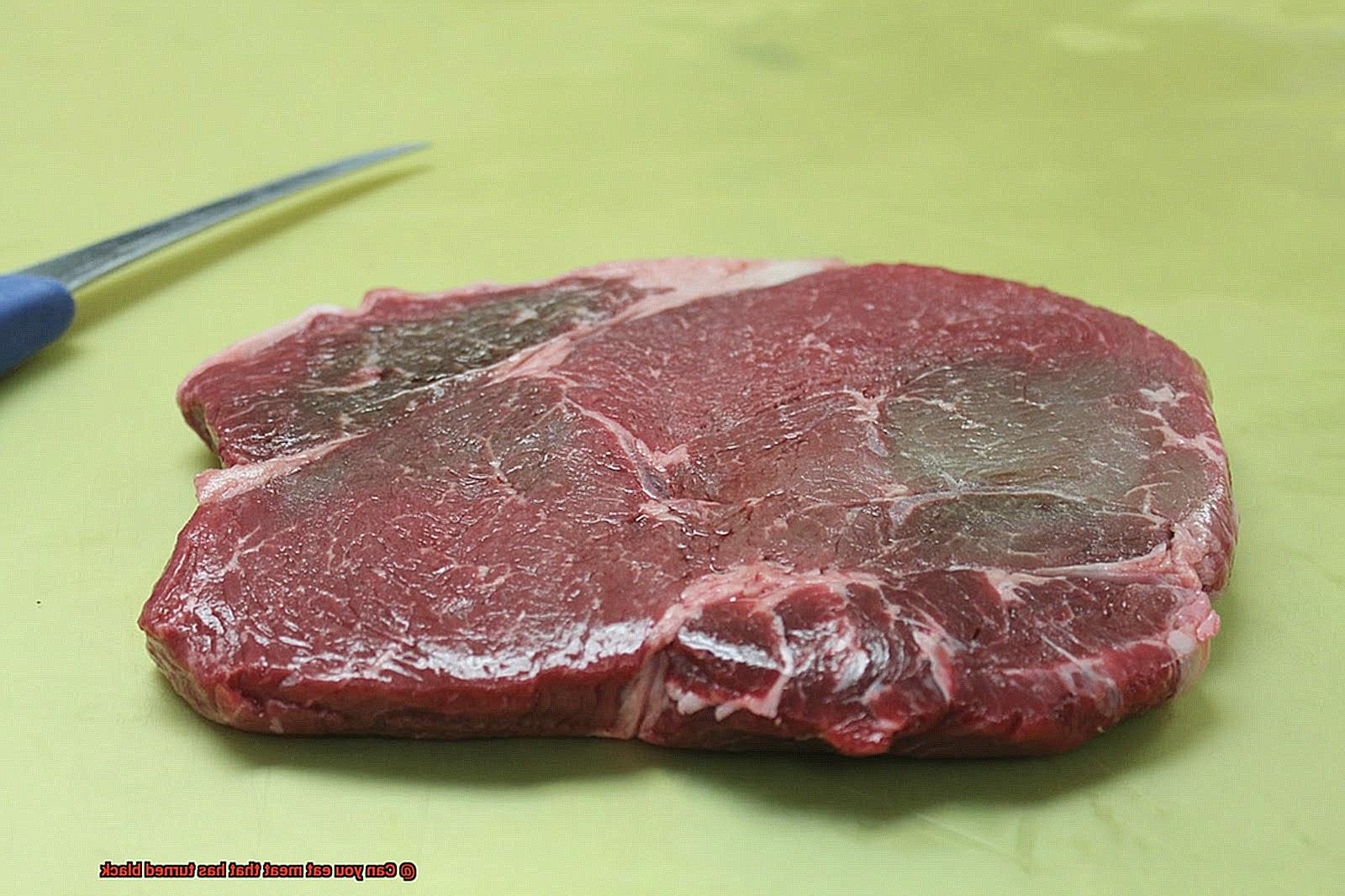
When purchasing meat, check the expiration date and inspect its appearance. Fresh meat should have a vibrant color, free from any discoloration or sliminess.
Ultimately, if you’re unsure about the safety of blackened meat, err on the side of caution and discard it. Cooking may kill some bacteria but cannot reverse spoilage or eliminate all toxins produced by bacteria.
Conclusion:
The discoloration of meat can be caused by oxidation, temperature abuse, spoilage, or chemical reactions. While most cases of blackened meat are harmless, it’s crucial to prioritize food safety. Trust your senses and follow proper storage and handling practices to reduce the risk of foodborne illnesses. When in doubt, toss it out.
The Dangers of Eating Blackened Meat
Grilling and barbecuing are beloved cooking methods, especially during the summer months. However, it’s crucial to be aware of the potential health risks associated with consuming blackened meat. The blackened appearance is caused by a chemical reaction known as the Maillard reaction, which can lead to certain dangers.
Carcinogens: Heterocyclic Amines (HCAs) and Polycyclic Aromatic Hydrocarbons (PAHs)
One of the main concerns with eating blackened meat is the formation of carcinogens. HCAs are formed when amino acids react with creatine during high-temperature cooking methods like grilling, broiling, or frying. PAHs are formed when fat from the meat drips onto hot surfaces or when flames from the grill come into contact with the meat. Both HCAs and PAHs have been linked to an increased risk of colorectal, pancreatic, and prostate cancer.
Toxins: Acrylamide and Advanced Glycation End Products (AGEs)
Consuming blackened meat can expose you to other harmful compounds. Acrylamide is a chemical compound that forms when certain foods are cooked at high temperatures and has been classified as a probable human carcinogen by the IARC. Additionally, the formation of AGEs during cooking can contribute to increased inflammation in the body and has been linked to chronic diseases like diabetes, heart disease, and Alzheimer’s.
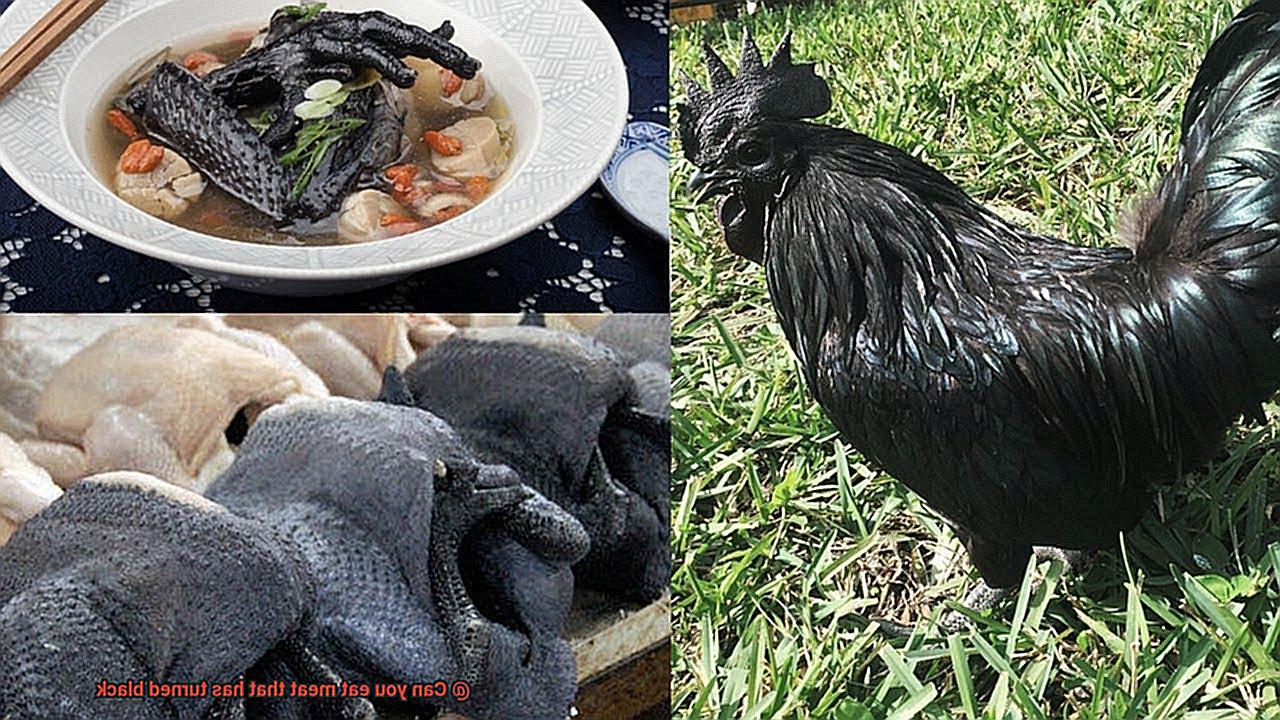
Minimizing the Risks:
To minimize the risks associated with eating blackened meat, consider these tips:
- Use marinades: Marinating meat before grilling can help reduce the formation of HCAs.
- Trim excess fat: This can minimize flare-ups and reduce the formation of PAHs.
- Avoid flare-ups: Flames coming into direct contact with the meat can release harmful compounds. To prevent flare-ups, keep a close eye on the grill and adjust heat levels accordingly.
- Cook at lower temperatures: Cooking meat at lower temperatures for longer periods can help reduce the formation of carcinogens.
- Consider alternative cooking methods: Baking, steaming, or boiling meat can help minimize the formation of HCAs, PAHs, and other harmful compounds.
How to Tell if Meat Has Spoiled
Grilling is a beloved cooking method, especially during the summer months. However, ensuring that the meat you plan to grill is fresh and safe to eat is paramount. In this guide, we will explore how to determine if meat has spoiled using your senses of sight, touch, and smell. By following these tips, you can safeguard yourself and your loved ones from potential foodborne illnesses.
Appearance:
The appearance of meat is often the first indicator of spoilage. If the meat has turned black, it is an unequivocal sign that it has gone bad and should never be consumed. This black coloration is typically accompanied by a slimy texture and a fetid odor, further confirming its spoilage.
Smell:
Another way to detect spoiled meat is by its scent. Fresh meat should have a neutral or mildly metallic aroma. However, if the meat releases a pungent, repugnant odor, it is a clear sign that it has spoiled. Trust your olfactory senses, and when in doubt, it is always better to err on the side of caution and discard the meat.
Texture:
The texture of meat can also provide valuable insights into its freshness. Fresh meat should feel firm and slightly moist to the touch. If the meat feels excessively soft or mushy, it is likely spoiled and should be disposed of immediately.
Expiration Date:
Always check the expiration date on packaged meats. While this date is not foolproof, it can give you an idea of how long the meat is expected to remain fresh. If the meat has surpassed its expiration date, it is advisable to closely inspect it for any signs of spoilage before consuming.
Packaging:
The condition of the packaging can also offer clues about the freshness of the meat. If there are any tears, leaks, or bulges in the packaging, these could indicate that the meat has been exposed to air and bacteria. Avoid consuming meat with compromised packaging, as it increases the risk of spoilage and foodborne illnesses.
Storage Conditions:
Proper storage conditions play a crucial role in preventing meat from spoiling. Meat should always be refrigerated at temperatures below 40°F (4°C). If you suspect the meat has been left out at room temperature for an extended period or has been exposed to high temperatures, it is best to discard it to avoid any potential health risks.
Trust Your Instincts:
Lastly, trust your instincts when determining if meat has spoiled. If something looks off or smells unusual, it is better to be safe than sorry and dispose of the meat. Consuming spoiled meat can lead to food poisoning, which can have severe consequences for your health.
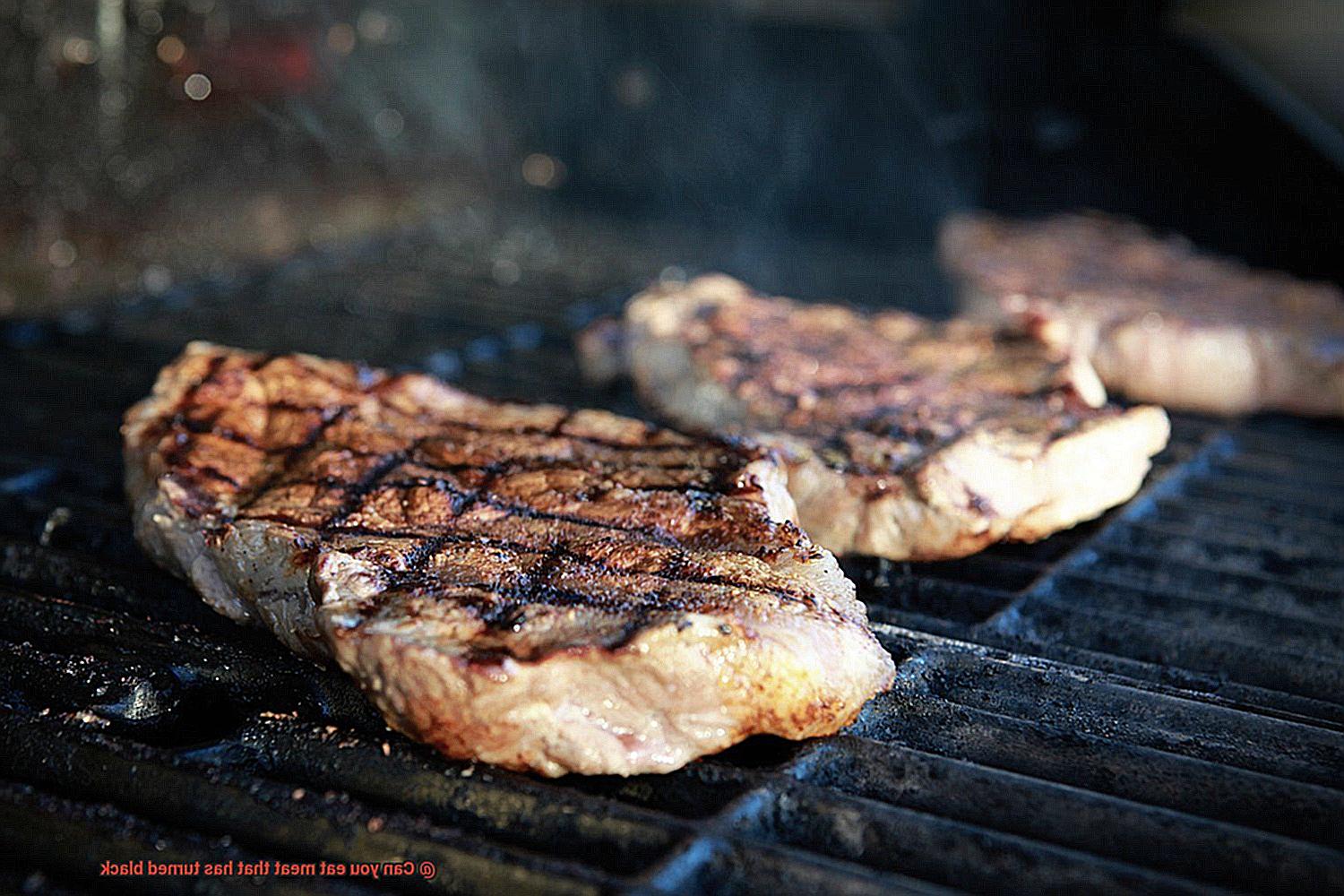
Prevention Tips to Avoid Blackened Meat
Sink your teeth into a succulent, perfectly cooked piece of meat—no blackened disappointment in sight. Blackened meat not only looks unappetizing but can also ruin the taste and texture. Fear not. We’ve got you covered with these prevention tips to avoid blackened meat when grilling or cooking. Get ready to savor every juicy bite.
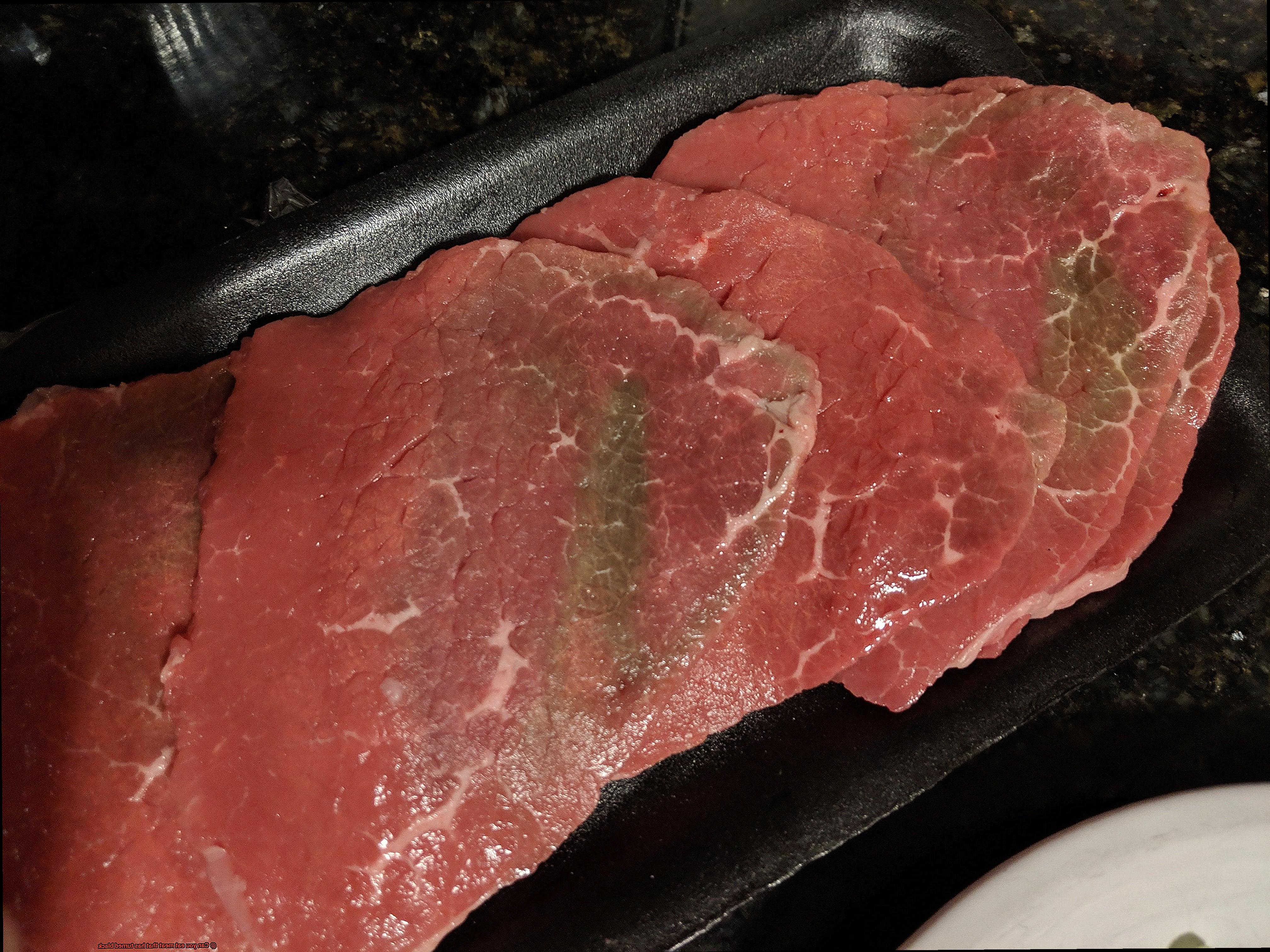
Controlling the Temperature:
Avoid scorching your meat by finding that Goldilocks sweet spot of heat. High temperatures turn meat into burnt offerings. Opt for moderate and consistent heat, ensuring a mouthwatering result that won’t leave you feeling burned.
Preheating the Grill:
Give your meat a warm welcome by preheating the grill properly. A cozy bed of heat ensures even cooking and reduces the risk of burning. Imagine your meat snuggling into that perfect temperature—pure grilling bliss.
Indirect Heat is the Way to Go:
Don’t just plop your meat over the flame—be a fancy chef and embrace indirect heat. Place your meat on the cooler side of the grill, allowing for slower and more even cooking. No charcoal briquettes here, just tender perfection.
Marinating Magic:
Add flavor and protection to your meat by marinating it before grilling. The moisture and deliciousness from marinating prevent dryness and blackening on the grill. It’s like giving your meat a tasty raincoat.
Timing is Everything:
Keep an eagle eye on the clock and use a digital thermometer to ensure perfectly cooked meat without overcooking or burning. Tender, succulent results are just a well-timed moment away.
Flip and Turn with Love:
Show your meat some love by regularly flipping and turning it while cooking. This ensures even heat distribution, guaranteeing that every side is cooked to perfection. No lopsided meals here.
Remember, the type of meat you choose and maintaining a clean grill are crucial factors in preventing blackened meat. Opt for marbled meats for juiciness, keep your grill clean for optimal performance, and experiment with different wood chips or charcoal to control the heat.
Checking for Freshness Before Purchase
Indulging in the sizzle and aroma of a perfectly grilled piece of meat is truly a culinary delight. However, to experience this gastronomic pleasure to the fullest, it is imperative to start with fresh meat. Checking for freshness not only guarantees maximum flavor but also safeguards your health. Before you ignite the grill, arm yourself with the knowledge of how to assess meat for its freshness and quality.
The Color Test:
One of the initial indicators of freshness lies in the color of the meat. The cuts should boast a vibrant red or pink hue, signifying that they are still in prime condition. Conversely, if the color has transformed into black or brown, it serves as an undeniable warning that spoilage has set in. The transformation to blackened meat can be attributed to oxidation, bacterial growth, or improper storage conditions.
The Science Behind It:
This color change occurs due to protein breakdown and the formation of compounds like metmyoglobin, imparting a dark appearance to the meat. While some may believe that thoroughly cooking blackened meat renders it safe to consume, this assumption is not always accurate. Cooking can eliminate bacteria and parasites but fails to eradicate toxins produced during spoilage. Therefore, it is best to steer clear of blackened meat and opt for cuts that retain their fresh appearance.
Additional Warning Signs:
Apart from color, there are other telltale signs of spoiled meat that demand attention. A putrid odor, slimy texture, or excessive moisture are all red flags indicating that the meat has reached its expiration date and should not be consumed. When purchasing pre-packaged meat, it is crucial to scrutinize the packaging for any signs of damage or leaks as these may signify contamination or compromised freshness.
Tips for Maintaining Freshness:
To prevent spoilage, proper storage practices play a pivotal role. After purchasing meat, promptly refrigerate or freeze it, ensuring it is securely sealed to preserve its freshness. If marinating the meat before grilling, always do so in the refrigerator and discard any leftover marinade that has come into contact with raw meat.
Proper Handling and Cooking of Meats
Imagine a summer evening, the air filled with the irresistible aroma of sizzling meat, and your taste buds buzzing with anticipation. But before you dive into that juicy steak or succulent chicken breast, it’s crucial to understand the importance of proper handling and cooking to ensure food safety. So, let’s fire up the grill and explore the ins and outs of grilling meats safely and deliciously.
- Choose Quality Cuts: Begin your grilling adventure by selecting meats from reputable sources known for their quality products. Opting for fresh cuts reduces the risk of harmful bacteria.
- Freshness Matters: Before purchasing or cooking meat, give it a thorough once-over. Look for vibrant colors, avoiding any meat that appears discolored, slimy, or emits unpleasant odors. Freshness is the key to a safe and mouthwatering grilling experience.
- Keep It Cool: Proper storage is essential for maintaining meat’s quality and safety. Refrigerate raw meats at temperatures below 40°F (4°C) to slow bacterial growth. If not using them within a few days, consider freezing them.
- Separate with Care: Prevent cross-contamination by keeping raw meats separate from cooked or ready-to-eat foods. Use separate cutting boards, utensils, and storage containers to avoid any mingling of delicious flavors with potentially harmful bacteria.
- Thaw Safely: Patience is crucial when thawing frozen meat. Avoid leaving it out at room temperature, as this promotes bacterial growth. Instead, thaw in the refrigerator or under cold running water.
- Master the Grill: When it’s time to cook, ensure that your meats reach the appropriate internal temperature to eliminate any lurking bacteria. Use a food thermometer to guarantee perfection – ground meats at 160°F (71°C), poultry at 165°F (74°C), and steaks or roasts at least 145°F (63°C) for medium-rare.
- Serve it Hot: Once your masterpiece is ready, serve it immediately or keep it hot at a temperature above 140°F (60°C) to prevent bacterial growth. Get ready to savor every mouthwatering bite.
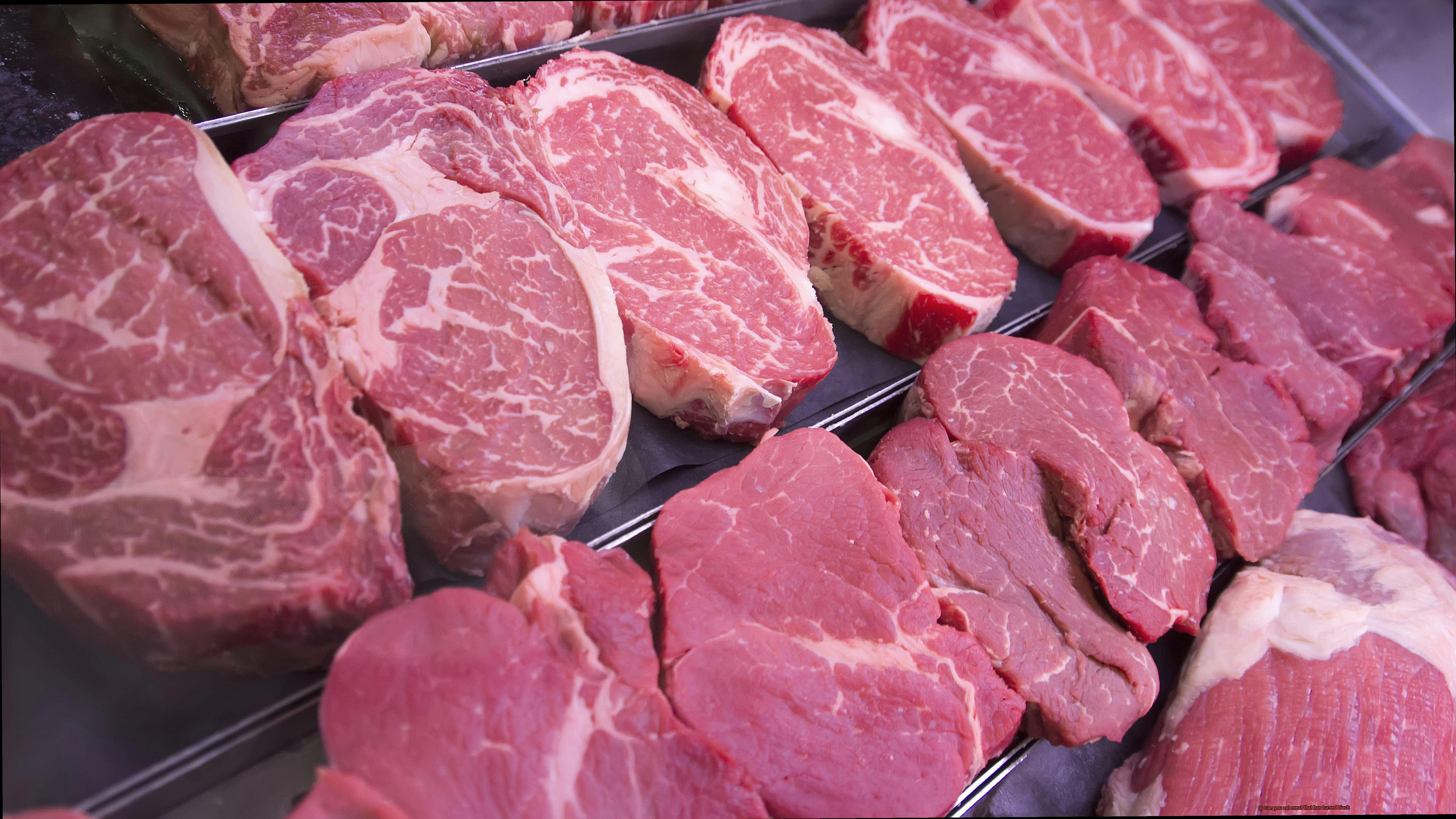
What to Do if You Suspect Spoiled Meat
Grilling is a favorite summertime activity, but it’s important to know what to do if you suspect that your meat has spoiled. Don’t let spoiled meat ruin your grill session. Follow these steps and guidelines to ensure a safe and delicious grilling experience.
Signs of Spoiled Meat:
When it comes to spoiled meat, your senses are your best friends. Look out for any unusual discoloration, like blackened areas or green spots. If your meat feels slimy or smells foul, it’s time to say goodbye. Trust your instincts and don’t take any chances.
Safety Precautions:
Spoiled meat can be a breeding ground for harmful bacteria that can make you sick. To protect yourself and your loved ones, handle spoiled meat with caution. Avoid contact with other foods to prevent cross-contamination, and always wash your hands thoroughly after handling it.
Do Not Consume:
If you suspect that your meat has turned black or shows any signs of spoilage, it’s best not to consume it. Eating spoiled meat can lead to severe health consequences, including food poisoning. Stay on the safe side and choose a fresh cut for your grilling adventure.
Discard Properly:
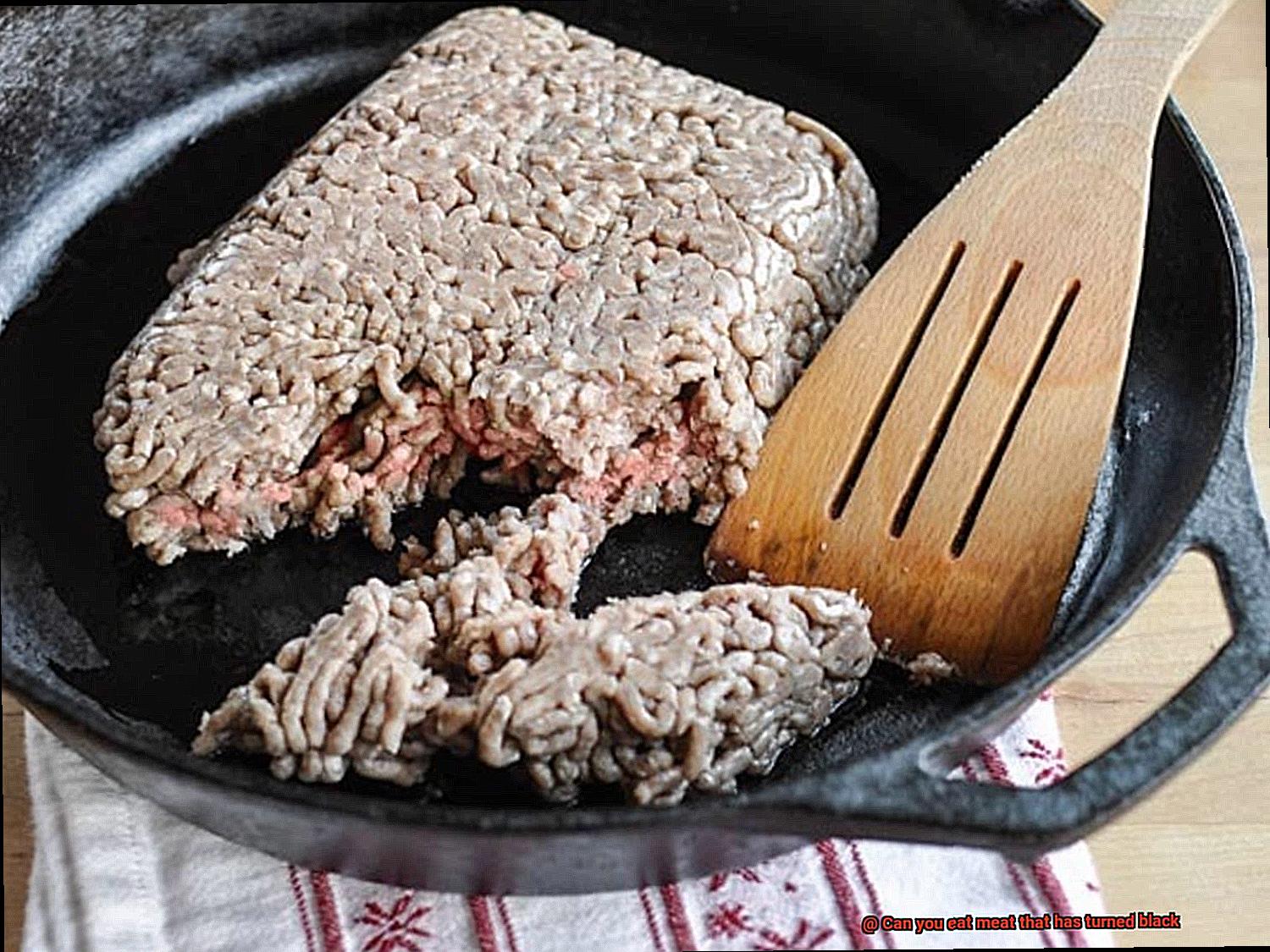
Proper disposal is crucial to prevent animals from accessing spoiled meat and spreading bacteria. Seal the spoiled meat in a sturdy plastic bag and place it in a secure trash bin. This way, you’ll protect wildlife and keep your surroundings clean.
Clean and Sanitize:
After handling spoiled meat, it’s essential to clean and sanitize any surfaces, utensils, or dishes that came into contact with it. Use hot soapy water or a diluted bleach solution to ensure thorough cleaning and prevent the spread of bacteria.
Seek Medical Attention if Necessary:
If you mistakenly consume spoiled meat and experience symptoms like vomiting, diarrhea, or stomach cramps, don’t hesitate to seek medical attention. Your health is a priority, and healthcare professionals can provide the necessary guidance and treatment to help you recover.
MnjkyF9HwAE” >
Conclusion
In conclusion, it is not safe to eat meat that has turned black. The black color indicates that the meat has undergone significant spoilage and bacterial growth, making it potentially harmful to consume. Consuming spoiled or contaminated meat can lead to foodborne illnesses such as salmonella or E. coli infections, which can cause severe symptoms like vomiting, diarrhea, and abdominal pain.
It is crucial to prioritize food safety and discard any meat that has turned black. While it may be disappointing to have to throw away a piece of meat, it is always better to err on the side of caution when it comes to your health. Remember, fresh and properly stored meat should have a vibrant color, such as bright red for beef or pink for poultry.
If you encounter blackened meat while cooking or preparing a meal, do not attempt to salvage it by trimming off the discolored parts. Bacteria can penetrate deep into the flesh, rendering the entire piece unsafe for consumption. It is best to discard the spoiled meat and choose a fresh alternative instead.
To prevent meat from turning black in the first place, proper storage and handling are essential. Always refrigerate raw meats promptly at temperatures below 40°F (4°C) and cook them thoroughly before consuming. Additionally, be mindful of expiration dates and follow safe food handling practices recommended by reputable sources such as the United States Department of Agriculture (USDA) or the Food and Drug Administration (FDA).
In summary, when it comes to eating meat that has turned black, it’s best to play it safe and avoid consumption altogether. Prioritize food safety by properly storing, handling, and cooking meats to reduce the risk of foodborne illnesses.

